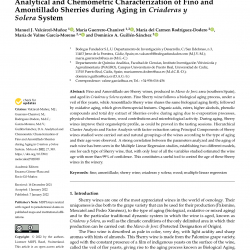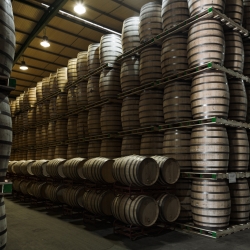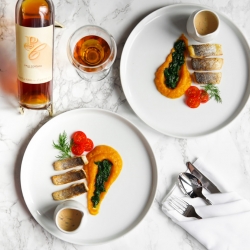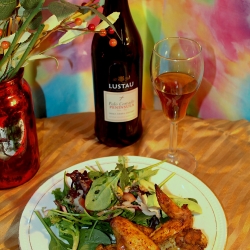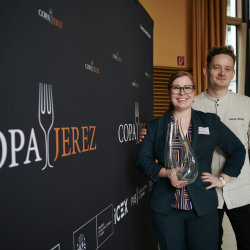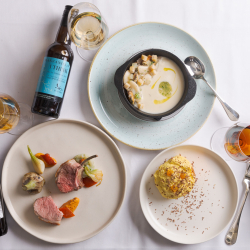The Women of the Sherry labels
Barrels and bottles
It is well known that Sherry Wines have long been popular around Europe – they were first exported to countries such as France and Flanders in the 15th century, and to England even earlier. At first, metal name labels were used on barrels, so that the producers could identify the wines, as could the clients to whom they were being sent, also serving as guarantees of the wine’s origin and quality.
Then, in the last quarter of the 19th century, wines passed from barrels to bottles. The name-tags (sometimes made of silver) were worn on chains, like necklaces, on the bottles, adding a certain cachet – such an elegantly-labelled Sherry Wine bottle would have been proudly displayed in the drawing rooms of consumers with a high social status. Some glass bottles were marked, or differently shaped, but soon a more detailed identification system was needed – hence the advent of paper labels.
Traditional Andalucian folklore
At the end of the 19th century, in the early era of Sherry Wine labels, Spain was still largely a rural country, whose economy was based on agriculture, and which had suffered endless conflicts, as well as the loss of its once-mighty Empire. So the focus for the labels’ artwork was on a return to the mythical countryside, the rural idyll. Also, a large percentage of the population was not literate, so pictures offered a better sell than words.
Typical figures on labels from the late 19th and early 20th centuries were from traditional Spanish folklore: costumbrist (romanticized everyday life) groups of festive characters, such as colourful gypsy women in frilly flamenco dresses, often dancing and singing, and bullfighters; guitars and tambourines; bulls and horses – a reflection of traditional Andalucian culture. Brands were known more for their visual representations on bottle labels, than by their names.
La gitana flamenca
 For example, Manzanilla La Flamenca from Gonzalez Byass, incorporates all these elements: the gypsy girl in a spotty flamenco dress with fringed shawl and flowers in her hair - just as women still dress at Spanish ferias today - dancing in front of a tambourine, accompanied by a man playing the guitar.
For example, Manzanilla La Flamenca from Gonzalez Byass, incorporates all these elements: the gypsy girl in a spotty flamenco dress with fringed shawl and flowers in her hair - just as women still dress at Spanish ferias today - dancing in front of a tambourine, accompanied by a man playing the guitar.
 Similarly, Manzanilla La Gitana from Hidalgo & Ca has a smiling gypsy lady with various hair adornments, a patterned skirt, and a shawl over a matching shirt. She wears a beaded necklace and smoulders seductively through heavy-lidded eyes from her relaxed yet inviting posture.
Similarly, Manzanilla La Gitana from Hidalgo & Ca has a smiling gypsy lady with various hair adornments, a patterned skirt, and a shawl over a matching shirt. She wears a beaded necklace and smoulders seductively through heavy-lidded eyes from her relaxed yet inviting posture.
Carmen Aumesquet, Promotions Director of the Consejo Regulador, is a keen collector of sherry labels, with around 8,000 from a wide range of bodegas, from Arbazuza to Garvey’s.
Carmen started collecting at the age of 10, encouraged by her English teacher, a jerezana ex-nun called Maruja who gifted Carmen a large part of her own extensive collection.
These labels are real works of art, produced one by one, by hand,
explains Carmen. “Only wines of the highest quality were bottled, and had such beautiful labels. They’re an important part of the rich cultural heritage of Vinos de Jerez.
The first labels were printed in Paris or Malaga because the right facilities weren’t available in Jerez until the early 20th century. Images of women were used very often”, says Carmen, “as the product was mostly bought and consumed by men.”
 These labels were “a homage to Andalucian women - sometimes particular gypsy flamenco performers inspired the labels,” explains Carmen. One of these was the singer Lola Flores, and Fino Lolita Flores from Manuel Becerra Varela. She is pictured as a grape-picker, holding a basket of grapes.
These labels were “a homage to Andalucian women - sometimes particular gypsy flamenco performers inspired the labels,” explains Carmen. One of these was the singer Lola Flores, and Fino Lolita Flores from Manuel Becerra Varela. She is pictured as a grape-picker, holding a basket of grapes.
 Carmen’s favourite label from her collection is Amontillado Petenera by Sanchez Romate. “This woman looks very strong and sure of herself,” says Carmen. “I love her confident expression, but also her embroidered shawl, with its wonderful colours.”
Carmen’s favourite label from her collection is Amontillado Petenera by Sanchez Romate. “This woman looks very strong and sure of herself,” says Carmen. “I love her confident expression, but also her embroidered shawl, with its wonderful colours.”
The emphasis was on relaxation and fun – these drinks were enjoyed at ferias, where people sang and danced flamenco, so that is what was portrayed on the labels.
 Nothing has changed there – feriantes still imbibe large quantities of Fino and Manzanilla at ferias around Spain. The season kicks off in a few weeks, with the Feria de Abril in Seville, where Sherry Wines, and flamenco singing and dancing, are still the stars of the show.
Nothing has changed there – feriantes still imbibe large quantities of Fino and Manzanilla at ferias around Spain. The season kicks off in a few weeks, with the Feria de Abril in Seville, where Sherry Wines, and flamenco singing and dancing, are still the stars of the show.
Written by Fiona Flores Watson for Sherry Wines. Follow Fiona on Twitter @Seville_Writer
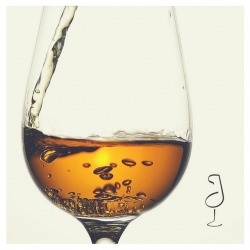

18 April 2016


